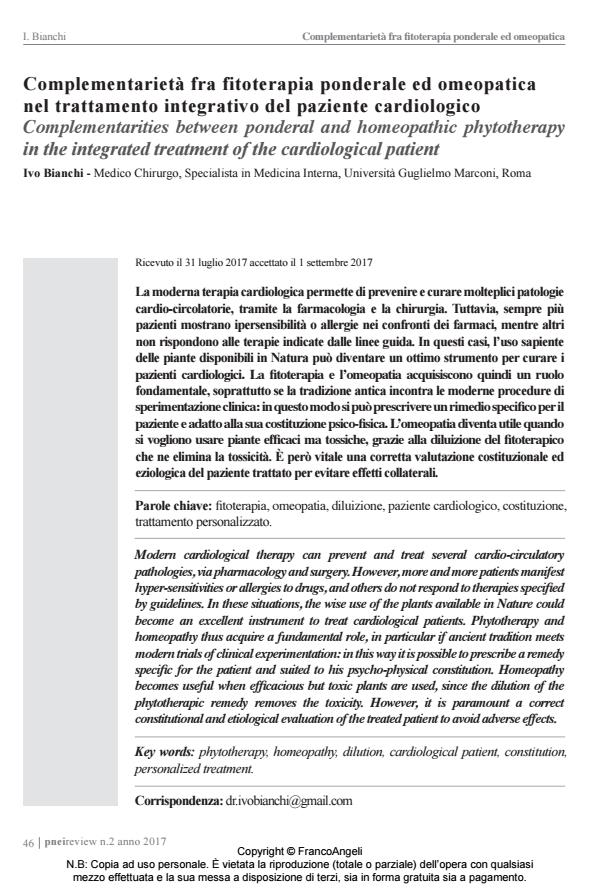Complementarities between ponderal and homeopathic phytotherapy in the integrated treatment of the cardiological patient
Journal title PNEI REVIEW
Author/s Ivo Bianchi
Publishing Year 2017 Issue 2017/2
Language Italian Pages 13 P. 46-58 File size 1205 KB
DOI 10.3280/PNEI2017-002005
DOI is like a bar code for intellectual property: to have more infomation
click here
Below, you can see the article first page
If you want to buy this article in PDF format, you can do it, following the instructions to buy download credits

FrancoAngeli is member of Publishers International Linking Association, Inc (PILA), a not-for-profit association which run the CrossRef service enabling links to and from online scholarly content.
Modern cardiological therapy can prevent and treat several cardio-circulatory pathologies, via pharmacology and surgery. However, more and more patients manifest hyper-sensitivities or allergies to drugs, and others do not respond to therapies specified by guidelines. In these situations, the wise use of the plants available in Nature could become an excellent instrument to treat cardiological patients. Phytotherapy and homeopathy thus acquire a fundamental role, in particular if ancient tradition meets modern trials of clinical experimentation: in this way it is possible to prescribe a remedy specific for the patient and suited to his psycho-physical constitution. Homeopathy becomes useful when efficacious but toxic plants are used, since the dilution of the phytotherapic remedy removes the toxicity. However, it is paramount a correct constitutional and etiological evaluation of the treated patient to avoid adverse effects.
Keywords: Phytotherapy, homeopathy, dilution, cardiological patient, constitution, personalized treatment.
Ivo Bianchi, Complementarietà fra fitoterapia ponderale ed omeopatica nel trattamento integrativo del paziente cardiologico in "PNEI REVIEW" 2/2017, pp 46-58, DOI: 10.3280/PNEI2017-002005